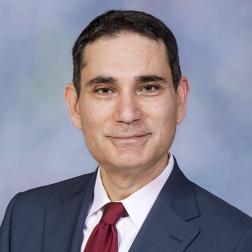Mexico’s Young Voters and the 2018 Elections
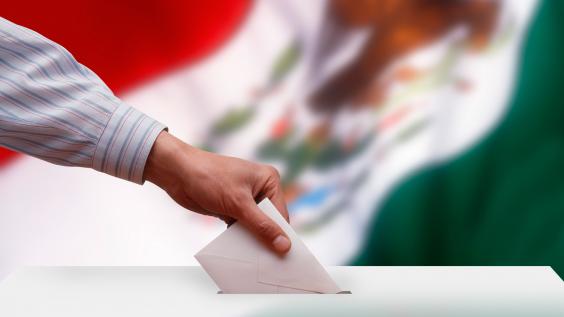
Table of Contents
Author(s)
Share this Publication
- Download PDF
- Print This Publication
- Cite This Publication Copy Citation
Payan, Tony. 2018. Mexico’s Young Voters and the 2018 Elections. Issue brief no. 03.13.18. Rice University’s Baker Institute for Public Policy, Houston, Texas.
Introduction
On July 1, 2018, Mexicans will go to the polls to participate in one of the most important elections in the country’s modern history. They will elect a president, who will serve from 2018 to 2024; renew all members of Mexico’s equivalent to the U.S. Senate and the House of Representatives; pick nine out of 32 governors; and choose almost 2,800 mayors, council members, and state legislators.1 This is the single largest election that Mexico has ever had, as the country now synchronizes all electoral contests so that a general election is held every six years and a mid-term election three years after that. Over 3,400 elected posts are up for grabs—an exceptional number that will surely reshape the country’s political landscape. Citizens will be primarily concerned with the rule of law, especially corruption and impunity; crime and violence; stagnant economic growth; and their general dissatisfaction with the current political establishment.
Given that a majority of Mexico’s citizens are relatively young (Figure 1), the most important bloc in this watershed election year is composed of people between the ages of 18 and 35—a population group roughly comparable to voting-age members of the so-called Generation Z and the “millennials” in the United States. In Mexico, these two groups together constitute around 45 percent of eligible voters (Table 1). Their importance as a voting bloc is even more evident if we consider that the last three presidential elections were decided by a small percentage of voters (Table 2). However, their potential influence on the results of the election is being sharply debated. Some contend that by virtue of their numbers, the social and political agendas of young voters will decisively change the political makeup of the country. Others argue that their historically low level of electoral participation suggests Mexico’s young adults will not truly matter in the election, or at least their participation will not be decisive. This brief examines the two hypotheses to explore the potential impact of Mexico’s 18-to-35 demographic on the 2018 election.
Figure 1 — Mexico’s Population by Gender and Age (2016)
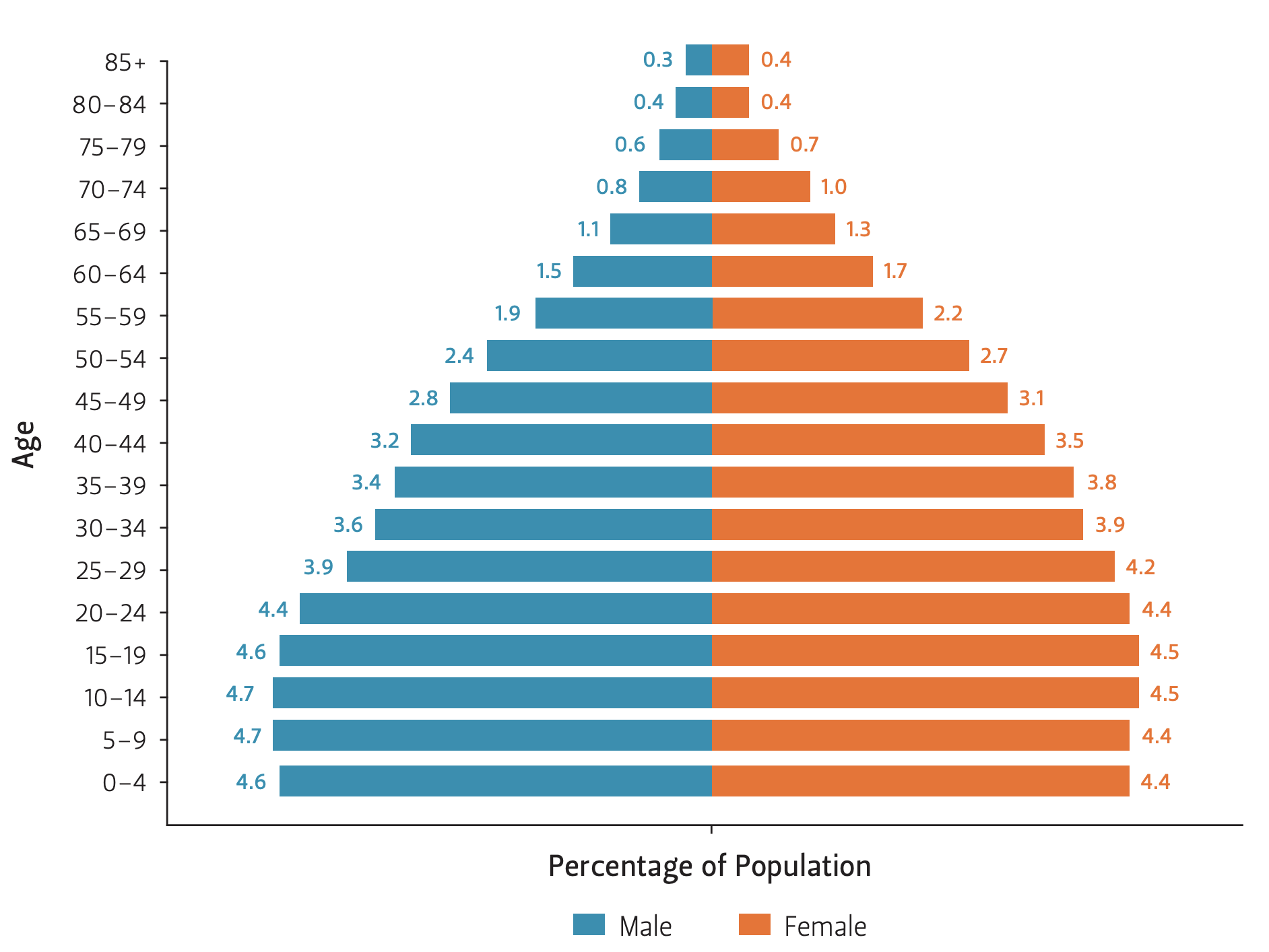
Mexico’s Young Voters as a Bloc: A Complex Population
As Figure 1 and Table 1 show, the youngest voting bloc in Mexico, defined in this brief as individuals between 18 years and 35 years of age, represents nearly 45 percent of eligible voters. In addition to their numbers, this bloc is important due to the differences that set them apart from their parents and grandparents. Over 80 percent of them live in urban areas.2 They are more educated than their parents. Tertiary education enrollment has climbed steadily in Mexico in recent decades. And today’s young voters are more connected to the Internet than previous generations, and possibly more exposed to alternative political ideas and debates.3 Mexico’s young adults also identify less with any one political party,4 as nearly half declare themselves as independents.5 In addition, they are more tolerant than previous generations of differing lifestyles and life choices: nearly half support gay marriage and abortion. Only two-thirds consider religion important in their lives.6 They are also accustomed to greater economic freedom—marked by free trade and economic integration with the United States and Canada—and are much more familiar with how people live in other countries. All in all, Mexico’s young adults tend to be somewhat like America’s millennials and Generation Z.
Table 1 — Eligible Voters in Mexico, All Age Groups
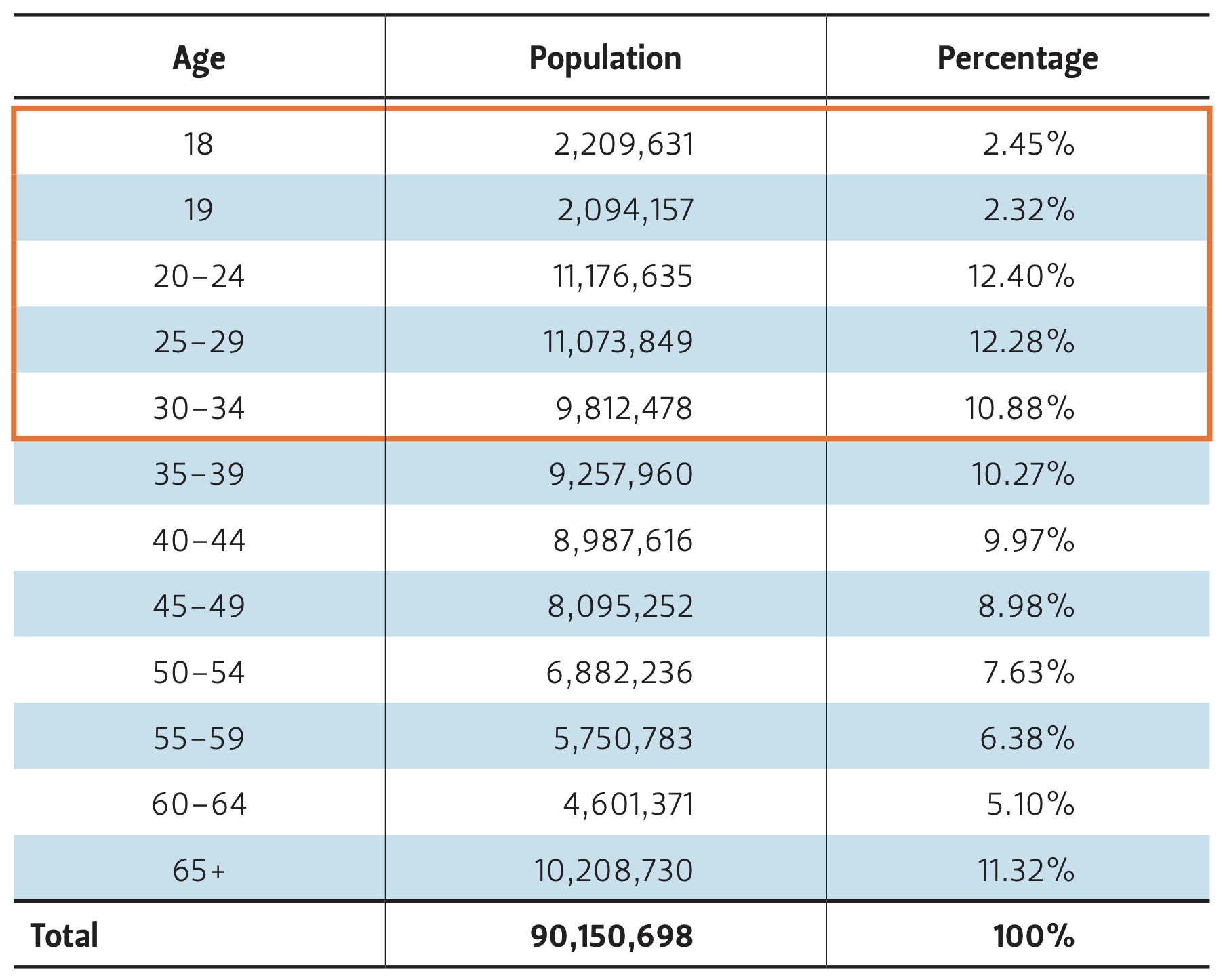
The youth of Mexico are not a homogeneous group, however. A sizable percentage in their teens and twenties are considered “ni-nis” (neither-nor), as they are neither employed nor attend school. These idle young men and women, as many as 7.8 million or 20 percent of the population,7 tend to be more disconnected from Mexico’s political, social, and economic systems,8 and are susceptible to the lure of organized crime.9 Moreover, Mexico’s young adults may also live in high levels of poverty and rely on their families for economic help.10 Many came of age and matured in a country with considerably high levels of crime, violence, and corruption. They also suffer serious social problems. Mexico, for example, has the highest teenage pregnancy rates of the OECD countries, pressing many young men and women into early marriage or into raising families, which deprives them of the opportunity to return to school or prepare for a professional career.
This mosaic of social, cultural, and economic characteristics makes it difficult to discern the precise political agenda of young Mexican voters—or how they might seek to further it at the polling booths, if they do so at all. That said, in a close race, the young will likely make a difference, as their social and political preferences are distinct from those of their parents and grandparents. For instance, according to Mitofsky, a polling house in Mexico, young voters lean toward Andrés Manuel López Obrador, the leftist candidate, over the PAN and PRI candidates, who are considered to be right of center.11
Table 2 — Election Results in Mexico (2000, 2006, 2012)
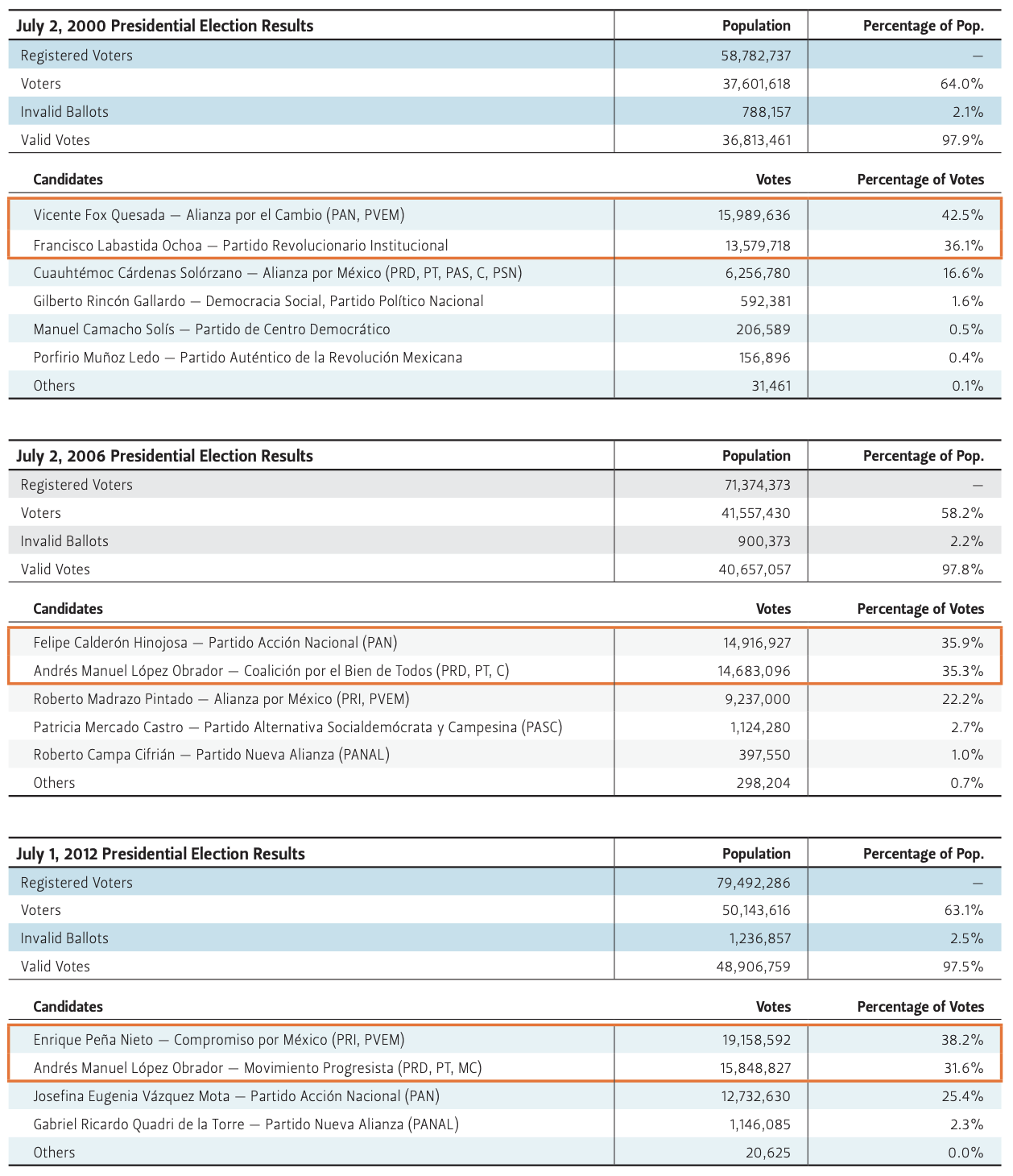
Figure 2 — Participation in Federal Elections, Ages 18–29 (2003, 2009, 2015)
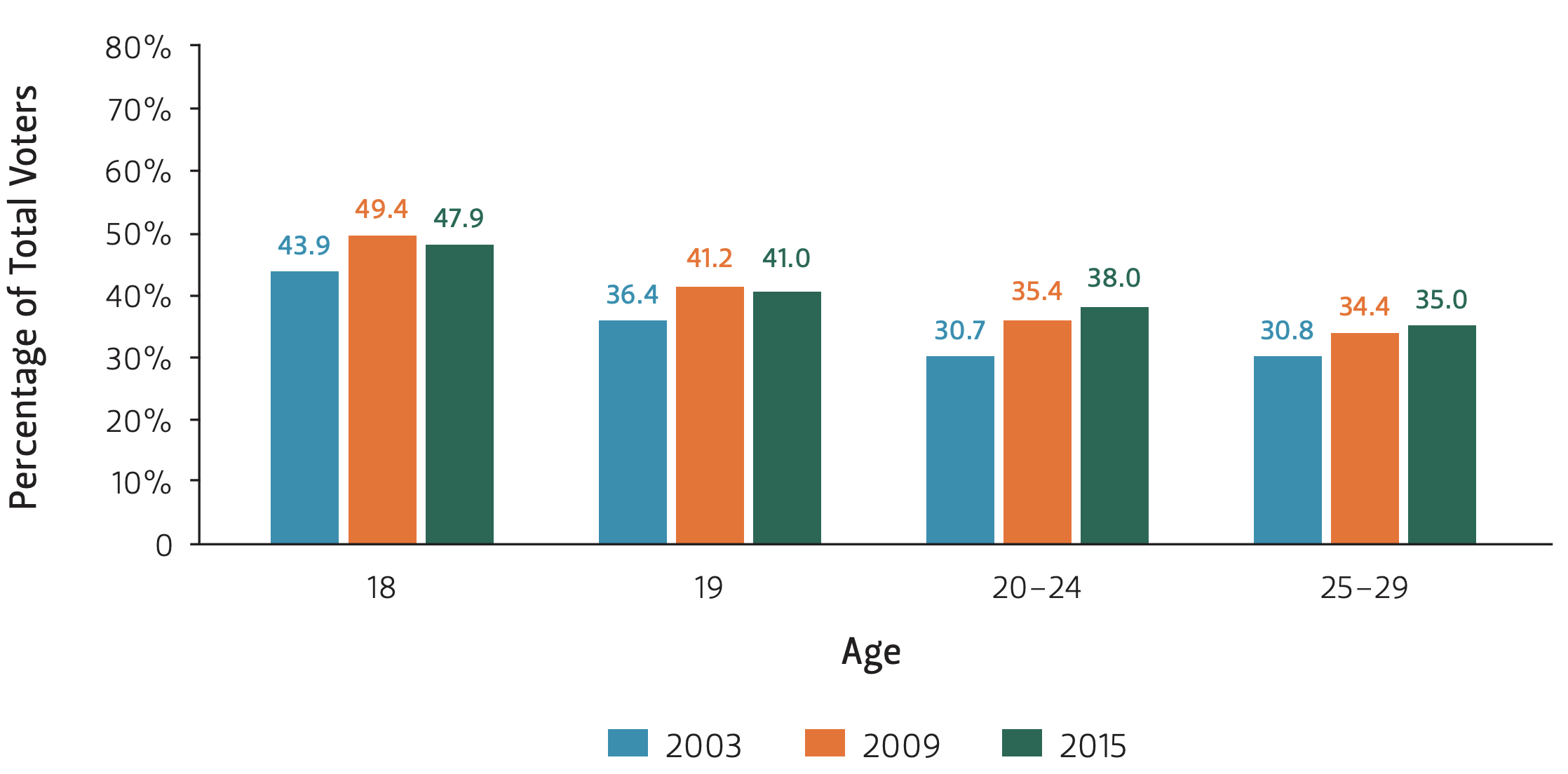
Political Participation
Another important factor in considering the impact of young Mexican voters is their level of political—especially electoral—participation, which is below that of older Mexicans. On average, only about one-third to one-half of Mexico’s young voters turn out at the polls on any given ballot, depending on whether it is a presidential or a mid-term election (Figure 2). Even here, however, the picture is somewhat unclear. Very young Mexicans—those casting a ballot for the first time—vote at relatively higher rates (Figure 2). This may reflect the fact that voting identification cards serve as national ID cards and nearly everyone gets one at age 18; the novelty of exercising the right to vote for the first time attracts many young people to the polls. Every year, over one million Mexicans become eligible to vote. Even if only half that number vote, it might be very important in relatively close elections, such as those in 2000, 2006, 2012—and very likely, in 2018.
Interestingly, voter turnout among Mexico’s young adults gradually declines between the ages of 18 and 30 (Figure 3), indicating a lesser influence on the electoral result, and their level of participation does not begin to rise again until after age 30 (Figure 3). Still, their numbers are sufficient to make a difference, given the relatively short distance between the first and second vote-getters in the last three presidential elections. This is particularly true for presidential elections, which have a higher voter turnout than mid-term elections (Figure 3).
The Political Agenda of Mexico’s Young Adults
Surveys show that poverty, unemployment, poor public safety, corruption, violence, and drug trafficking rank at the top of the concerns of young Mexican citizens (Figure 4). In this sense, their positions are very similar to those of most Mexicans, who also cite such issues as key problems facing the country.12 This could indicate that young Mexican voters may vote like other Mexicans—i.e., largely against the current government. More proactively, many will also look for candidates or political parties whose visions for the country are more attuned to their own cultural, social, and economic views. If they find such a candidate or political party, their votes will certainly carry that candidate or party to power.
Moreover, young Mexican voters are considerably more open-minded and liberal than older Mexicans and much more exposed to intense and varied online political debates. They are also less exposed to traditional media, such as television and radio, both of which tend to be dominated by the Mexican government’s official discourse, primarily through so-called “social communication,” which is funded by the government.13 Finally, 27 percent of young people consider themselves leftist in their ideological orientation—that is, they are more socially liberal and believe in greater government responsibility for social welfare, which could favor certain political parties—although another 27 percent consider themselves politically right of center.
Figure 3 — Voter Turnout in Mexican Federal Elections by Age (2009, 2012, 2015)

Figure 4 — Issues That Concern Mexico’s Youth (2018)
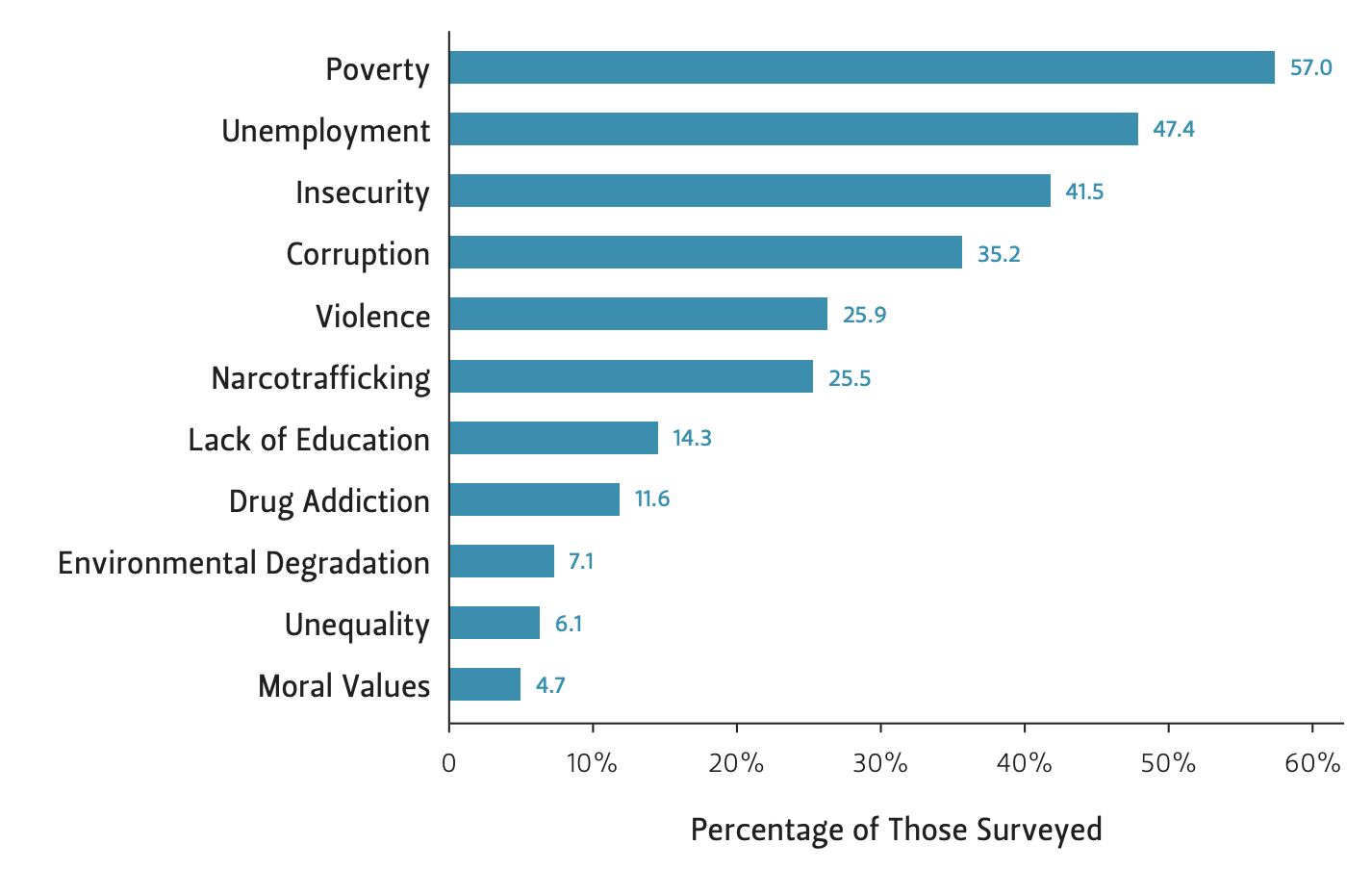
Political Impact of Youth on Elections in 2018
Having examined key characteristics of Mexico’s young voters and the problems associated with predicting their voting intentions, it appears that this enormous voting bloc is up for grabs in the 2018 election. It is therefore important to pay attention to their political behavior, as they will likely be a major force in Mexico’s politics in the foreseeable future.
Endnotes
1. Baker Institute for Public Policy, Mexico Election Resource Center, 2018, https://www.bakerinstitute.org/mexico-2018-election-resource-center.
2. World Bank, 2017, https://data.worldbank.org/indicator/SP.RUR.TOTL.ZS.
3. Statista, 2016, https://www.statista.com/statistics/728356/internet-devices-mexico/.
4. Jesús Aguilar López, “Identificación Partidaria de los jóvenes mexicanos en el proceso electoral 2012,” Revista Mexicana de Ciencias Políticas 60, no. 223 (2015).
5. Centro de Estudios Sociales y de Opinión Publica de la Cámara de Diputados, 2010, http://www3.diputados.gob.mx/camara/content/download/245922/706630/file/Capsula_ semanal_139.pdf.
6. ENJ or Encuesta Nacional de Valores Juventud 2012. See General Results at https://www.imjuventud.gob.mx/imgs/uploads/ENVAJ_2012.pdf.
7. Rafael De Hoyos, Rafael, Anna Popova, and Halsey Rogers, “Out of School and Out of Work: A Diagnostic of Ni-nis in Latin America,” Policy Research Working Paper No. 7548, World Bank, Washington, D.C., 2016. See https://openknowledge.worldbank.org/handle/10986/23723. License: CC BY 3.0 IGO.
8. ENJ, 2012.
9. Comisión Nacional de Derechos Humanos-México, “Informe Especial. Adolescentes: Vulnerabilidad y Violencia,” Mexico City, 2017. See http://www.cndh.org.mx/sites/all/doc/Informes/Especiales/Informe_adolescentes_ 20170118.pdf.
10. ENJ, 2012.
11. Mitofsky, “México 2018: Preferencias al Final de las Precampañas,” http://consulta.mx/index.php/estudios-e-investigaciones/elecciones-mexico/item/1007-mexico-2018-preferencias-al-final-de-las-precampanas.
12. Mitofsky, “Encuesta Nacional ¿Cómo se siente el mexicano? Cambio de año 2017-2018,” http://consulta.mx/index.php/estudios-e-investigaciones/mexico-opina/item/1001-16-encuesta-nacional-como-se-siente-el-mexicano-cambio-de-ano-2017-2018.
13. Azam Ahmed, “Con su enorme presupuesto de publicidad, el gobierno mexicano controla los medios de comunicación, The New York Times. December 25, 2017, https://www.nytimes.com/es/2017/12/25/con-su-enorme-presupuesto-de-publicidad-el-gobierno-mexicano-controla-los-medios-de-comunicacion-pri-pena-nieto/.
14. National Electoral Institute (INE), http://portalanterior.ine.mx/archivos3/portal/historico/contenido/Internacional_English/. See also Roberto Heycher Cardiel and Francisco J. Morales, “Ellas y Ellos, Cuanto Votan,” Voz y Voto, http://vozyvoto.com.mx/ellas-y-ellos-cuanto-votan/; IFE, Estudio Censal de la Participaci´on Ciudadana en las Elecciones Federales de 2012, page 132, http://portalanterior.ine.mx/docs/IFE-v2/DECEYEC/DECEYEC-EstudiosInvestigaciones/InvestigacionIFE/Estudio_Censal_Participacion_Ciudadana_2012.pdf; INE, “Estudio Censal sobre la Participación Ciudadana en las Elecciones Federales de 2015,” page 145, http://biblioteca.diputados.gob.mx/janium/bv/ine/2016/estcen_parciu_elfed15.pdf.
15. Diagnóstico de la situación de los jóvenes en México, Dirección de Investigación y Estudios sobre Juventud del Instituto Mexicano de la Juventud Encuesta Nacional de Valores en Juventud 2012, or Diagnostic on the Conditions of Youth in Mexico, produced by the Office of Research and Studies on Youth at the Mexican Institute for the Young. See http://www.imjuventud.gob.mx/imgs/uploads/Diagnostico_Sobre_Jovenes_En_Mexico.pdf.
This material may be quoted or reproduced without prior permission, provided appropriate credit is given to the author and Rice University’s Baker Institute for Public Policy. The views expressed herein are those of the individual author(s), and do not necessarily represent the views of Rice University’s Baker Institute for Public Policy.
